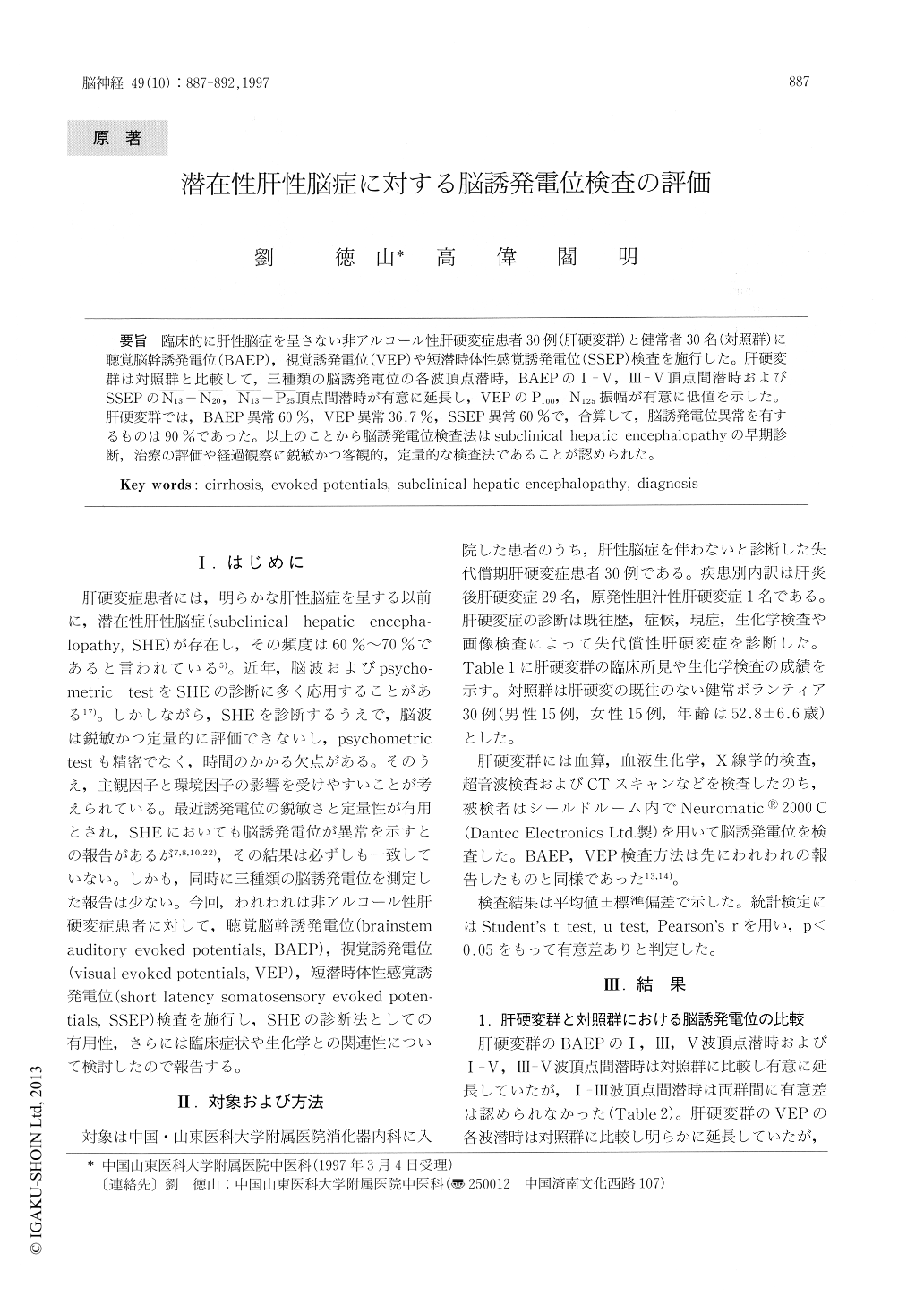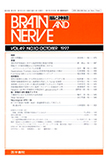Japanese
English
- 有料閲覧
- Abstract 文献概要
- 1ページ目 Look Inside
臨床的に肝性脳症を呈さない非アルコール性肝硬変症患者30例(肝硬変群)と健常者30名(対照群)に聴覚脳幹誘発電位(BAEP),視覚誘発電位(VEP)や短潜時体性感覚誘発電位(SSEP)検査を施行した。肝硬変群は対照群と比較して,三種類の脳誘発電位の各波頂点潜時,BAEPのI-V,III-V頂点間潜時およびSSEPのN13—N20,N13—P25頂点間潜時が有意に延長し,VEPのP100,N125振幅が有意に低値を示した。肝硬変群では,BAEP異常60%,VEP異常36.7%,SSEP異常60%で,合算して,脳誘発電位異常を有するものは90%であった。以上のことから脳誘発電位検査法はsubclinical hepatic encephalopathyの早期診断,治療の評価や経過観察に鋭敏かつ客観的,定量的な検査法であることが認められた。
Brainstem auditory evoked potentials (BAEP), visual evoked potentials (VEP) and short latency somatosensory evoked potentials (SSEP) were examined in 30 nonalcoholic liver cirrhotics without clinically detectable hepatic encephalopathy and 30 healthy controls. In the cirrhotics, all peak latencies of the three kinds of evoked potentials, the inter-peak latencies (IPLs) I -V, III- V of BAEP and the IPLs N13-N20, N13-P25 of SSEP were significantlyprolonged compared with the controls, respectively.

Copyright © 1997, Igaku-Shoin Ltd. All rights reserved.


